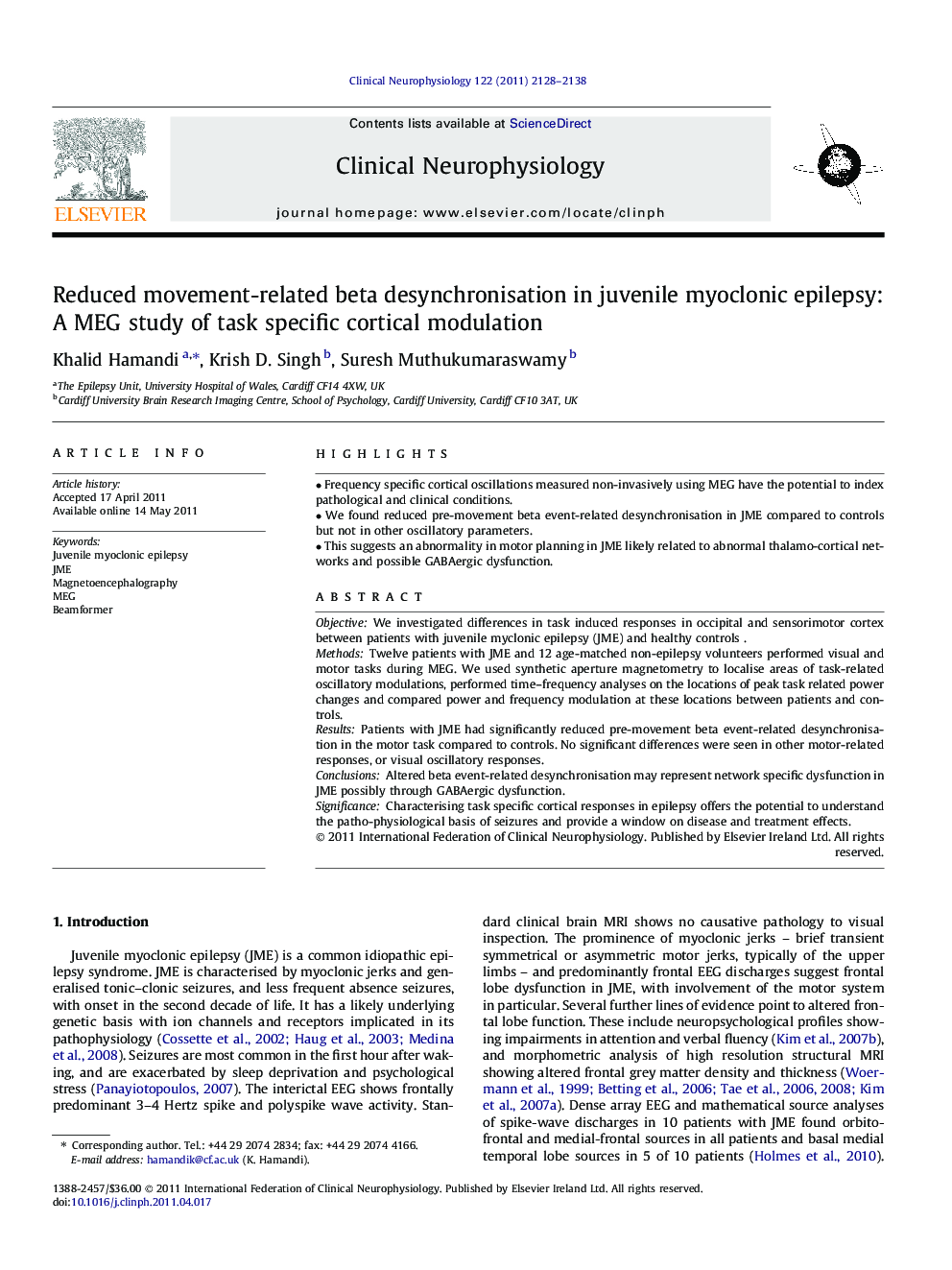| Article ID | Journal | Published Year | Pages | File Type |
|---|---|---|---|---|
| 3043791 | Clinical Neurophysiology | 2011 | 11 Pages |
ObjectiveWe investigated differences in task induced responses in occipital and sensorimotor cortex between patients with juvenile myclonic epilepsy (JME) and healthy controls .MethodsTwelve patients with JME and 12 age-matched non-epilepsy volunteers performed visual and motor tasks during MEG. We used synthetic aperture magnetometry to localise areas of task-related oscillatory modulations, performed time–frequency analyses on the locations of peak task related power changes and compared power and frequency modulation at these locations between patients and controls.ResultsPatients with JME had significantly reduced pre-movement beta event-related desynchronisation in the motor task compared to controls. No significant differences were seen in other motor-related responses, or visual oscillatory responses.ConclusionsAltered beta event-related desynchronisation may represent network specific dysfunction in JME possibly through GABAergic dysfunction.SignificanceCharacterising task specific cortical responses in epilepsy offers the potential to understand the patho-physiological basis of seizures and provide a window on disease and treatment effects.
► Frequency specific cortical oscillations measured non-invasively using MEG have the potential to index pathological and clinical conditions. ► We found reduced pre-movement beta event-related desynchronisation in JME compared to controls but not in other oscillatory parameters. ► This suggests an abnormality in motor planning in JME likely related to abnormal thalamo-cortical networks and possible GABAergic dysfunction.
